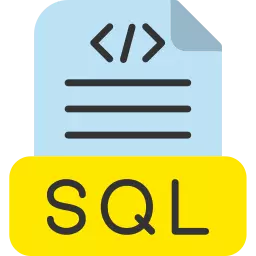Introduction to SQL

Introduction to Structured Query Language
Introduction to SQL in the modern digital era, data has become the lifeblood of businesses and organizations. It drives decision-making, provides valuable insights, and facilitates seamless operations.
SQL (Structured Query Language) emerges as the cornerstone of database management, empowering users to interact with data and unleash its true potential. In this article, we will delve into the world of SQL and explore its functionalities, applications, and future prospects.
What are SQL ?
SQL, which stands for Structured Query Language, is a domain-specific language used for managing relational databases. It serves as a powerful tool for interacting with databases, enabling users to store, manipulate, and retrieve data with ease.
SQL provides a standardized way to communicate with database management systems and perform various operations, such as querying, inserting, updating, and deleting data.
Getting Started with SQL
Key Concepts Of SQL
Databases and Tables
In SQL, a database serves as a container for storing related data, while tables organize data into rows and columns, resembling spreadsheets. Each table represents a specific entity, such as customers, products, or orders, and consists of individual records.
SQL Statements
SQL operates through various statements, each serving a specific purpose. The most common statements include SELECT, INSERT, UPDATE, DELETE, CREATE, and DROP, among others.
Database Management Systems (DBMS)
A DBMS is a software system that enables users to interact with databases. It provides an interface for users and applications to access, retrieve, and manage data efficiently.

Click below to access free SQL quizzes related to Introduction to SQL which will be helpful in your placement exams
DDL: Data Definition Language
DDL commands focus on defining and managing the structure of the database. These commands handle tasks like creating tables, modifying their structure, and setting constraints.
| Command | Description |
|---|---|
| Create | to create new table or database |
| Alter | for alteration |
| Truncate | delete data from table |
| Drop | to drop a table |
| Rename | to rename a table |
DML: Data Manipulation Language
DML commands facilitate the manipulation of data within tables. They include SELECT, INSERT, UPDATE, and DELETE statements
| Command | Description |
|---|---|
| insert | insert to insert a new row |
| update | to update existing row |
| delete | to delete a row |
| merge | merging two rows or two tables |
DCL: Data Control Language
DCL commands manage access to the database objects. They control user permissions, granting or revoking privileges to ensure data security.
| Command | Description |
|---|---|
| grant | grant permission of right |
| revoke | take back permission. |
Advanced SQL Queries
JOINs
- JOINs allow users to combine data from multiple tables based on related columns, providing a comprehensive view of the data.
Subqueries
- Subqueries, also known as nested queries, enable users to use the result of one query as input for another, enhancing data retrieval and manipulation capabilities.
Aggregation Functions
- SQL provides aggregation functions like SUM, COUNT, AVG, MIN, and MAX, allowing users to summarize and analyze data efficiently.
Common Table Expressions (CTEs)
- CTEs are temporary result sets that can be used within a larger SQL query, simplifying complex queries and improving readability.
Indexes and Optimization
- Indexes play a crucial role in optimizing database performance by speeding up data retrieval operations.
SQL vs. NoSQL
Real Life Applications of SQL
Web Development
- SQL is extensively used in web development to manage user data, content, and backend operations.
Business Intelligence and Reporting
- Businesses utilize SQL to generate reports, perform data analysis, and gain insights for strategic decision-making.
Data Analysis
- Data analysts leverage SQL to explore and analyze large datasets, drawing valuable conclusions from raw data.
Conclusion
In conclusion of Introduction of SQL, SQL is a fundamental language for managing relational databases, offering powerful tools for data manipulation and retrieval. Whether you are a data enthusiast, web developer, or business analyst, learning SQL can unlock numerous opportunities and streamline your workflow. Embrace the power of SQL and unleash the true potential of your data-driven endeavors.
Prime Course Trailer
Related Banners
Get PrepInsta Prime & get Access to all 200+ courses offered by PrepInsta in One Subscription
Get over 200+ course One Subscription
Courses like AI/ML, Cloud Computing, Ethical Hacking, C, C++, Java, Python, DSA (All Languages), Competitive Coding (All Languages), TCS, Infosys, Wipro, Amazon, DBMS, SQL and others





Login/Signup to comment